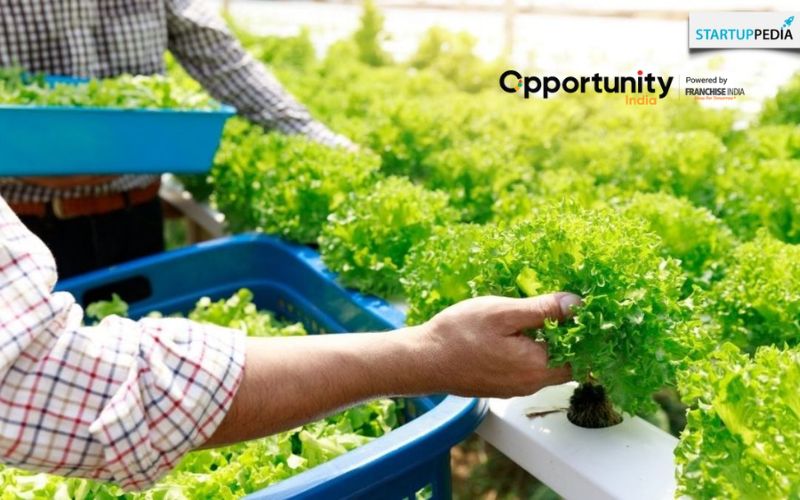
The future of farming is here, and the days of traditional farming are over. A growing number of people are turning to cleaner, more intelligent methods of growing food due to weather fluctuations, soil erosion, and limited land availability. Here comes hydroponic farming, a soilless technique that grows plants in a regulated environment using water and nutrients. If you are just interested in hydroponics and actually considering making it into a successful business, you are at the right place. In this article, we will discuss what makes a hydroponic farming business plan work and how you can make it profitable.
What Is Hydroponic Agriculture?
Consider cultivating plants without soil. Strange, right? Maybe it is. However, it does a fantastic job. With hydroponics, you give a plant all the nutrients it requires through water. The plants develop more quickly, healthier, and frequently produce more because they aren't wasting energy looking for minerals in the soil.
The finest aspect? You may grow crops anywhere—in your living room, on your balcony, in a warehouse, or even on your rooftop. Hydroponic farming is becoming a major force in sustainable agriculture as urban populations increase and arable land becomes more scarce. It makes it possible to grow crops in regulated conditions, without soil, and with nutrient-rich water; in fewer areas, it frequently produces greater yields.
Also Read: Pearl Farming in India – Process and Investment Cost
In 2024, the hydroponics market in India was valued at USD 506.7 million. According to IMARC Group's forecast, the market would increase at a compound annual growth rate (CAGR) of 16.91% from 2025 to 2033, reaching USD 2,292.7 million. Establishing a hydroponic farming business, however, involves more than just setting up equipment and cultivating vegetables. It needs a sound plan, investment strategy, and market knowledge, just like any other business.
Surprisingly, farming's future is soil-free. In India, hydroponics—the cutting-edge technique of cultivating plants in nutrient-rich water solutions—is quickly gaining popularity. Hydroponic farming is more than a passing trend; it's a profitable business prospect with its promise of increased yields, quicker growth, less water use, and year-round growth.
Why Choose Hydroponic Farming?
Hydroponic farming is more than just a specialized farming method. It offers a strong answer to many of the problems that traditional farming faces, particularly in a nation like India. Here are some reasons why hydroponic farming is a wise choice:
Superior Resource Efficiency
- Water Conservation: Perhaps the biggest benefit is the ability to conserve water. Compared to traditional farming, hydroponic systems can use up to 90% less water. Water is recycled and reused in a closed-loop system, with little loss from runoff or evaporation. For India's water-stressed areas, this is revolutionary.
- Space Optimization: Hydroponics enables extremely effective use of available space. You can produce a lot of food in a short area by growing vertically (by stacking layers of plants) or in compact systems. This makes it perfect for establishing farms on roofs or in abandoned warehouses, as well as for metropolitan areas.
- Nutrient Control: The nutrients that plants require are delivered right to their roots. This stops the frequent nutrient waste that occurs in soil, where nutrients can disappear or become accessible. The ideal growth and health of the plants are guaranteed by the accurate delivery.
Superior Yields and Faster Growth
- Higher Yields: Hydroponic plants frequently yield noticeably more per square foot than soil-grown crops because of their perfect growing circumstances. This includes consistent nutrients, the right amount of light, temperature, humidity, and light. Three to ten times more, according to some reports.
- Greater Speed of Growth: Hydroponic plants don't have to waste energy looking for nutrients in the soil. They grow more quickly when they have direct access to what they require, which results in faster harvest cycles and more harvests annually. This translates into a more reliable and plentiful supply of products.
- Production All Year Long: Hydroponic farms are protected from the elements because they are housed in controlled spaces, such as greenhouses or inside. This makes it possible to cultivate all year round, despite harsh weather conditions like droughts, floods, and seasons. Business strategy and market supply both benefit greatly from this stability.
Improved Safety and Quality
- No Soil-Borne Pests and Diseases: Many common soil-borne pests and diseases are eliminated when the soil is removed. This results in cleaner, healthier produce by drastically lowering the need for chemical pesticides and herbicides.
- Pesticide-Free Produce: Hydroponic farms can frequently grow produce entirely free of dangerous pesticides, appealing to health-conscious consumers due to the regulated environment and decreased pest risk.
- Better Nutritional Value and Flavor: Growers may maximize the nutritional profile of crops by carefully regulating nutrient delivery, and many people think that produce cultivated hydroponically has better flavor and texture because of the constant ideal circumstances.
- Decreased Contamination Risk: Food is safer for customers when it is produced in a controlled environment since there is less chance of contamination from outside sources.
Also Read: How To Start a Fish Farming Business With a Plan in India?
Environmental Management
- Decreased Environmental Impact: Hydroponics decreases soil erosion, prevents soil degradation, and lessens nutrient runoff into streams, which can contaminate natural ecosystems, in addition to saving water.
- Reduced Carbon Footprint: Hydroponics helps to cut down on "food miles"—the distance food travels from farm to plate—by facilitating local food production in urban areas. As a result, transportation expenses and related carbon emissions are greatly reduced.
- Preservation of Arable Land: Hydroponics provides a means of producing food without using up more valuable land resources, which is critical as the world's population rises and arable land becomes scarcer. It can even make use of vertical spaces, roofs, and non-arable land.

Step-by-Step Hydroponic Farming Business Plan
Agriculture is transforming due to hydroponics, the technique of growing plants without soil. With its increased yields, quicker growth cycles, and lower water usage, it attracts entrepreneurs. However, hydroponics success depends on careful preparation, just like any other business.
Market Research and Crop Selection
Determine which crops are in demand in your target market first. Typical crops produced hydroponically include:
- Leafy greens: kale, spinach, and lettuce
- Herbs: coriander, mint, and basil
- Vegetables: bell peppers, cucumbers, and tomatoes
- Exotic crops: microgreens, strawberries
Tips:
- Visit neighborhood eateries and supermarkets to find out what's popular.
- Analyze costs and understand your rivals.
- Seek out niche markets like upscale hotels or organic shops.
Select the Appropriate Hydroponic System
Hydroponic systems come in a variety of varieties. Your crop type, area, and budget should all influence your decision.
| System Type | Best For | Complexity | Cost |
|---|---|---|---|
| Nutrient Film Technique (NFT) | Leafy greens | Moderate | Medium |
| Deep Water Culture (DWC) | Leafy greens, herbs | Low | Low |
| Ebb and Flow | Larger plants | High | High |
| Drip System | Tomatoes, cucumbers | Moderate | Medium |
| Aeroponics | Advanced crops | High | High |
Also Read: Aloe Vera Farming in India: A Business Plan
Establish the Infrastructure and Location
It is possible to establish hydroponic farms:
- Indoors (in controlled settings with grow lights)
- Greenhouses (polyhouse or net house)
- Backyards or rooftops
Requirements:
- Clean water supply
- Electricity for pumps and lights
- Climate control (temperature, humidity, CO₂ levels)
- Adequate ventilation
Registrations and Legal Requirements
Before you begin to launch your business, you will require:
- Business registration (LLP, Pvt. Ltd., or sole proprietorship)
- FSSAI license (for edible crops)
- GST registration (if yearly income surpasses the threshold)
- Permission from local municipal authorities (if applicable)
Detailed Investment Breakdown
Let’s assume a small-scale hydroponic farm set up in a 1000 sq. ft. area.
| Item | Cost (INR) |
|---|---|
| Polyhouse setup (1000 sq. ft.) | ₹2,50,000 |
| Hydroponic system (NFT/DWC) | ₹1,00,000 |
| Water tanks and plumbing | ₹30,000 |
| Grow lights and electricals | ₹50,000 |
| Seeds and nutrients (initial 3 months) | ₹20,000 |
| Climate control equipment | ₹50,000 |
| Labor and packaging | ₹20,000 |
| Miscellaneous (testing kits, pH meter) | ₹10,000 |
| Total Initial Investment | ₹5,30,000 |
Marketing & Sales Strategy
A Direct-to-Consumer (D2C) marketing and sales strategy. Sell through your own e-commerce website, organic stores, or neighborhood farmers' markets.
- B2B Sales: Provision to grocery stores, restaurants, and lodging facilities.
- Subscription Model: Provide fresh greens on a weekly or monthly basis.
- Branding: To appeal to health-conscious customers, emphasize local farming, chemical-free produce, and sustainability.
Also Read: How to Start Organic Farming: Profitable Business Plan?
For individuals who want to maximize their limited area and resources, hydroponic farming is a clever, sustainable, and highly profitable alternative to traditional agriculture. Even a tiny hydroponic farm may expand into a successful enterprise with the correct crop selection, a carefully thought-out system setup, and a clear marketing plan. Faster growth cycles, higher yields, and less resource use are some of the long-term advantages that make the initial investment worthwhile.





